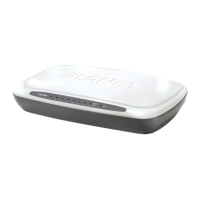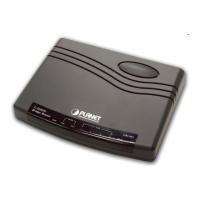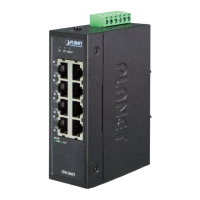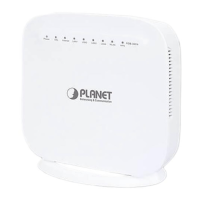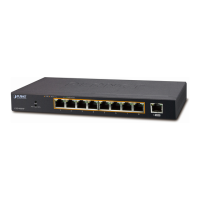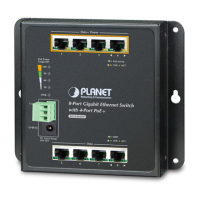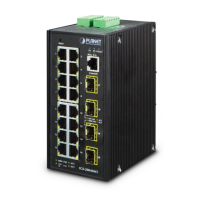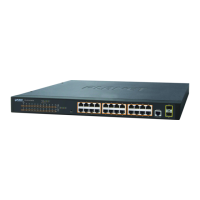- 112 -
6. SWITCH OPERATION
6.1 Address Table
The Switch is implemented with an address table. This address table composed of many entries. Each
entry is used to store the address information of some node in network, including MAC address, port no,
etc. This information comes from the learning process of Ethernet Switch.
6.2 Learning
When one packet comes in from any port. The Switch will record the source address, port no. And the
other related information in address table. This information will be used to decide either forwarding or
filtering for future packets.
6.3 Forwarding & Filtering
When one packet comes from some port of the Ethernet Switching, it will also check the destination ad-
dress besides the source address learning. The Ethernet Switching will lookup the address-table for the
destination address. If not found, this packet will be forwarded to all the other ports except the port which
this packet comes in. And these ports will transmit this packet to the network it connected. If found, and the
destination address is located at different port from this packet comes in, the Ethernet Switching will
forward this packet to the port where this destination address is located according to the information from
address table. But, if the destination address is located at the same port with this packet comes in, then
this packet will be filtered. Thereby increasing the network throughput and availability
6.4 Store-and-Forward
Store-and-Forward is one type of packet-forwarding techniques. A Store-and Forward Ethernet Switching
stores the incoming frame in an internal buffer, do the complete error checking before transmis-
sion. Therefore, no error packets occurrence, it is the best choice when a network needs efficiency and
stability.
The Ethernet Switch scans the destination address from the packet-header, searches the routing table
provided for the incoming port and forwards the packet, only if required. The fast forwarding makes the
switch attractive for connecting servers directly to the network, thereby increasing throughput and avail-
ability. However, the switch is most commonly used to segment existing hubs, which nearly always
improves overall performance. An Ethernet Switching can be easily configured in any Ethernet network
environment to significantly boost bandwidth using conventional cabling and adapters.
Due to the learning function of the Ethernet switching, the source address and corresponding port number
of each incoming and outgoing packet are stored in a routing table. This information is subsequently used
to filter packets whose destination address is on the same segment as the source address. This confines
network traffic to its respective domain, reducing the overall load on the network.
The Switch performs "Store and forward" therefore, no error packets occur. More reliably, it reduces the
re-transmission rate. No packet loss will occur.
6.5 Auto-Negotiation
The STP ports on the SGSW-2620 switch have built-in "Auto-negotiation". This technology automatically
sets the best possible bandwidth when a connection is established with another network device (usually at
Power On or Reset). Detecting the modes does this and speeds at the second of both devices are con-
nected and capable of, both 10Base-T and 100Base-TX devices can connect with the port in either Half- or
Full-duplex mode. 1000Base-T can only be connected in Full-duplex mode.

